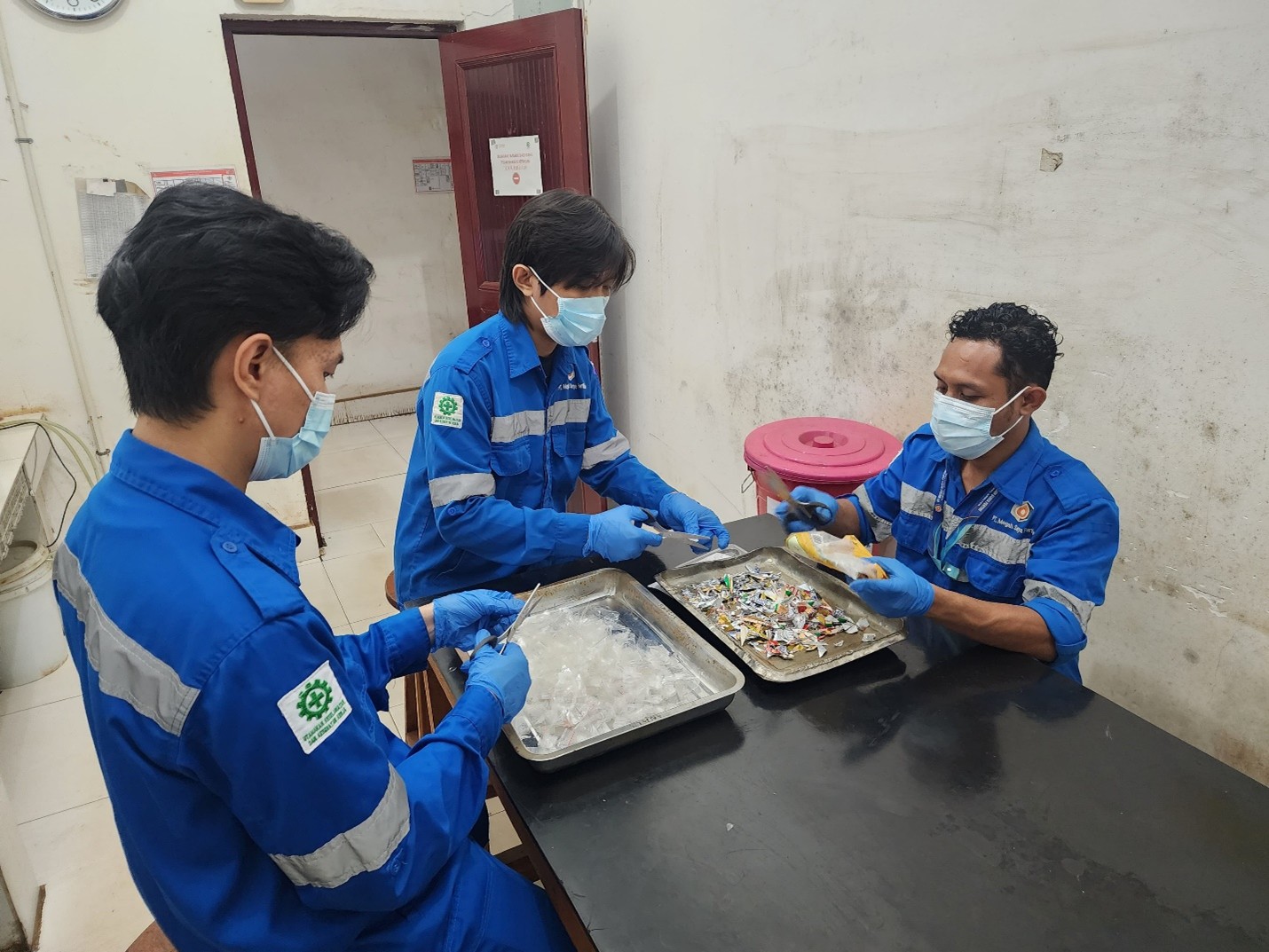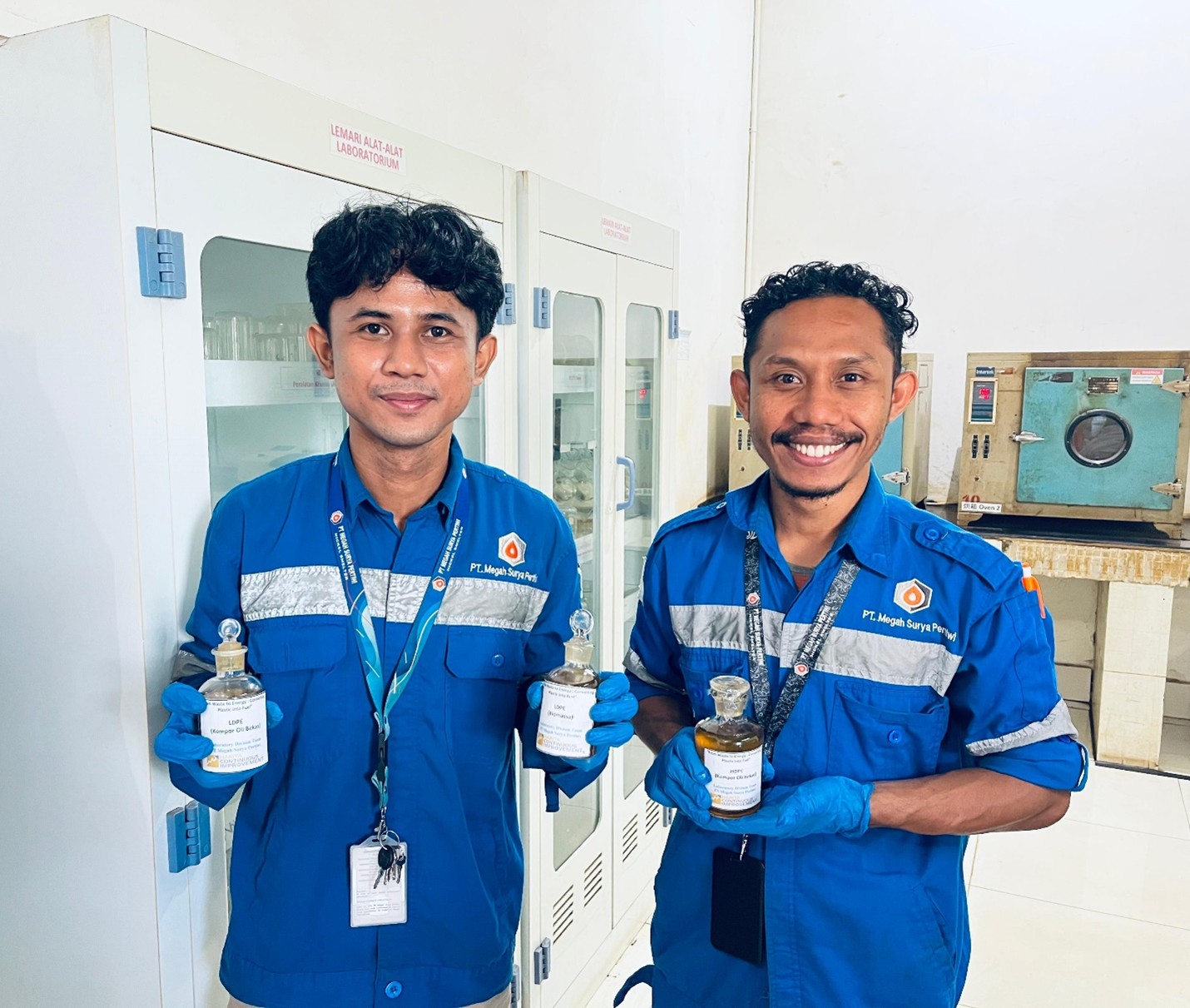


12 June 2025
Every day, plastic waste from operational activities and employee routines accumulates, posing significant environmental challenges. However, the Laboratory team at PT Megah Surya Pertiwi (MSP), a business unit of Harita Nickel, has innovatively turned this plastic waste into valuable energy through the “From Waste to Energy” project.
The method used is pyrolysis, a thermal decomposition process performed in the absence of oxygen. This process breaks down plastic into oil, gas, and solid residues without burning it. The primary product, a mixed fuel in liquid form, has been successfully used to support various technical operations in the field.
“We aim to address environmental challenges not merely through discussions but through tangible actions,” said Willy Kesuma Dewadi, Head of Technical Support at MSP.

The project, titled “From Waste to Energy,” follows a structured approach: providing designated plastic bins, sorting the plastic waste, building a pyrolysis machine, and testing the final product. Through this process, the team has successfully converted 1,236 kilograms of plastic waste per year into an alternative, cost-effective, environmentally friendly and sustainable energy source.
Economically, this innovation offers significant advantages. With the machine using only 500 watts of power and electricity costing around IDR 1,699 per kWh, production costs are much lower than the market price of plastic-based fuel, which can reach IDR 7,000 per liter. This results in a potential value gain of around IDR 5,300 per liter.
Charles Hasiholan, Deputy Head of HSE and Security at Harita Nickel, emphasized that this project's benefits extend beyond mere cost efficiency. “This initiative clearly demonstrates the company's commitment to environmental sustainability and circular economy practices,” he said.

The project was also featured in the Harita Continuous Improvement (HCI) 2024 competition, an annual event encouraging employees to create real innovations in operations, safety, and environmental management. Internal data shows strong implementation results: 100% completion of the initial stages through to production, and 94% success in fuel testing. Field use of the mixed fuel has reached 67% and continues to grow as technical adjustments are made.
“From Waste to Energy is more than just a technical project. It’s a new way of looking at waste, not as a problem, but as an opportunity for the future of alternative energy,” Willy concluded, proudly showing the team’s homemade pyrolysis machine.
Go Top